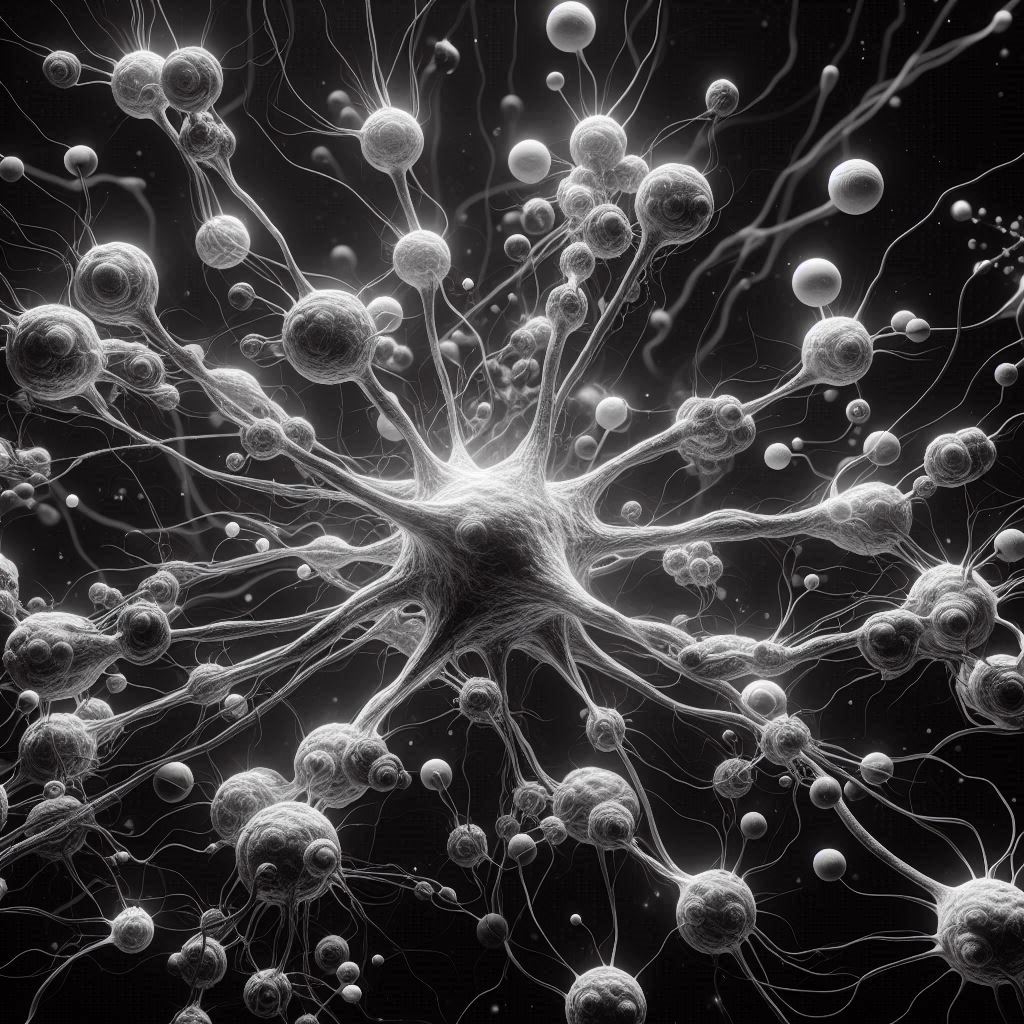Feeling disconnected from reality can be unsettling. Derealization, a dissociative experience, often leaves people questioning what’s real. It’s more common than many realize and is frequently misunderstood.
Recognizing its symptoms—such as feeling detached from your surroundings—is an essential step toward understanding and addressing this condition. Whether brief or persistent, these experiences can impact daily life, making awareness key.
Understanding Derealization
Derealization can feel like the world around you is out of focus, almost as though you’re watching it through a pane of glass. For those who experience it, this sense of detachment can be confusing and, at times, frightening. While often associated with other mental health conditions, derealization itself is a unique and specific experience that deserves closer attention.
Definition of Derealization
Derealization is a dissociative state where the external world feels unreal or distorted. It’s not about seeing things that aren’t there—reality itself simply feels off. People often describe it as if their surroundings are foggy, dreamlike, or lifeless. Colors may seem muted, sounds might feel distant, or objects could appear flat or unfamiliar. Although you remain aware that these perceptions are not real, they can still create significant distress.
Unlike hallucinations or delusions, derealization doesn’t involve losing touch with what’s real. It’s more like your brain puts a filter over reality, making it harder to feel connected. This protective mechanism might kick in during times of stress, almost as if your mind is trying to shield you from overwhelming emotions.
Relationship to Anxiety Disorders
Derealization is often linked to anxiety and stress-related disorders. It’s particularly common during intense episodes of panic or when someone is living under prolonged emotional tension. Why does this happen? Imagine your brain as a circuit breaker—when it senses too much emotional overload, it can temporarily “shut down” certain feelings to protect itself. The result? A sense of detachment from your surroundings.
Anxiety disorders, such as panic disorder or generalized anxiety disorder (GAD), frequently include derealization as a symptom. During a panic attack, for example, the flood of adrenaline and hyper-awareness can make the world feel distorted. Chronic stress can also trigger sustained periods of derealization, leaving individuals feeling stuck in this detached state.
People with derealization tied to anxiety may find that the symptoms worsen during moments of heightened worry or fear. While this experience is uncomfortable, it’s important to note that it’s the body’s natural response to protect itself—it’s not dangerous, even if it feels alarming. Recognizing this connection to anxiety can help demystify the condition and make it easier to manage.
Key Symptoms of Derealization
Derealization is a challenging experience to articulate. Those who go through it often feel as though something in their perception of the world has shifted—like life is playing out behind a glass barrier. While specific symptoms vary, certain patterns emerge that help make sense of the condition. Here are some of the key ways that derealization manifests.
Feeling Detached from Reality
One of the most common symptoms of derealization is the overwhelming feeling of being disconnected from your environment. It’s as if there’s an invisible wall separating you from the world. Your surroundings may feel lifeless or artificial, almost like you’re in a movie set or simulation. Despite this, you’re fully aware that this sense of detachment isn’t how things should feel, which only adds to the discomfort.
People often describe this as watching their life unfold from the outside, almost like being an observer rather than an active participant. You’re present physically, but emotionally and mentally, it can feel like you’re elsewhere.
Visual Distortions
Derealization can also alter visual perception. Many people report changes like blurry vision, dim lighting, or an odd shift in color intensity. Objects might appear farther away or strangely distorted, as if you’re looking through a warped camera lens.
This symptom can make your environment feel unfamiliar, even if you’ve been in the same space hundreds of times. For some, everything might look flat, like a two-dimensional image, while others might feel as though their vision is slightly out of sync with reality.
Auditory Changes
Sounds might not feel the same during an episode of derealization. Some describe noises as muted, as if their ears are stuffed with cotton. Others experience an echo-like quality or a sense that speech and other sounds are filtered through an invisible barrier.
This auditory distortion is unsettling, especially in social settings. Conversations can feel distant or less personal, heightening the sense of disconnection. Everyday sounds like traffic, music, or even your own voice might not feel as sharp or clear as usual.
Emotional Numbness
Another hallmark of derealization is emotional numbness. During episodes, your ability to connect with your feelings can feel muted or entirely absent. You might find it hard to feel joy, sadness, or anger—even in situations that would typically trigger strong emotions.
This can be particularly distressing when interacting with loved ones; moments that should feel meaningful may seem hollow. The lack of emotional depth can make you wonder if you’re “losing touch” with yourself, but this numbness is often your brain’s way of coping with stress or overload.
Sense of Time Distortion
Derealization frequently warps your perception of time. Moments might feel stretched or compressed, leaving you unsure how much has passed. A two-minute conversation could feel like it lasted half an hour—or like it ended in the blink of an eye.
This can create a surreal experience, as trying to track time during an episode often feels impossible. The present moment feels slippery, making it hard to anchor yourself. This distortion further blurs the line between what feels real and unreal.
Each of these symptoms contributes to the overall sense of disconnection that defines derealization. Understanding them can help provide clarity, even when the experience feels anything but clear.
Triggers of Derealization
Derealization doesn’t occur randomly. It is often set off by specific experiences or circumstances. Understanding these triggers can help people identify patterns and work toward managing their symptoms. Below, we’ll explore some of the most common causes that lead to episodes of derealization.
High-Stress Situations
Stress can push the mind and body to their limits. When stress reaches an overwhelming level, derealization may occur as a coping response. Have you ever felt so overloaded that your brain seemed to “shut down” emotionally? That’s derealization stepping in, almost like an internal defense mechanism.
In high-stress moments, your brain works to protect you from emotional or mental overload. It might temporarily detach you from your surroundings to shield you from the intense pressure. Think of it as hitting the pause button on reality because things feel too intense to handle in the moment.
Persistent stress—like juggling a demanding job, overwhelming family responsibilities, or dealing with financial struggles—can also lead to ongoing episodes of derealization. The constant pressure can keep your brain in a hyper-alert state, making it feel harder to stay connected to the world around you.
Traumatic Experiences
Trauma is one of the strongest triggers for derealization. Whether it’s a single traumatic event or repeated exposure to harmful situations, the brain often responds by creating a sense of detachment. This reaction can occur during or after the trauma itself.
For example, people who have experienced physical or emotional abuse, natural disasters, or accidents might find their brains shutting down emotionally as a survival response. Derealization creates distance between the person and the trauma, helping them endure an otherwise unbearable situation.
In cases of post-traumatic stress disorder (PTSD), derealization is common. Exposure to triggers that remind someone of a past trauma can bring feelings of detachment rushing back. While the body is trying to protect itself, the result can leave the individual feeling isolated and disconnected from reality.
Substance Use
Certain substances can directly cause symptoms of derealization. Psychedelics, marijuana, and even some prescription medications are common culprits. These drugs can alter the brain’s perception of reality, bringing about a dreamlike, distorted state.
For instance, marijuana may cause sensations of detachment or unreality in some users, especially if consumed in high doses. Psychedelic drugs like LSD or psilocybin can also intensify these feelings, making the external world feel unreal or distant.
Even after the effects of a substance wear off, some people experience lingering symptoms of derealization. This is particularly true with heavy, prolonged use or in individuals who are predisposed to anxiety disorders. For some, these sensations may develop into what’s known as depersonalization-derealization disorder, which requires further evaluation and care.
Understanding the connection between substances and derealization can help people avoid future triggers and take steps to protect their mental well-being.
Coping with Derealization
Experiencing derealization can feel isolating and confusing. While it is unsettling, there are ways to manage these symptoms and regain a sense of connection to reality. Whether by practicing grounding techniques, seeking therapy, or relying on supportive relationships, there are actionable steps you can take to better navigate these episodes and find relief.
Grounding Techniques
When derealization occurs, grounding techniques can help anchor you in the present moment. These strategies are designed to reconnect you with your physical surroundings and break the sensation of detachment.
Here are some practical methods you can use:
- 5-4-3-2-1 Method: Acknowledge 5 things you can see, 4 you can touch, 3 you can hear, 2 you can smell, and 1 you can taste.
- Breathing Exercises: Focus on slow, deep breaths. Inhale for four seconds, hold for four seconds, and exhale for four seconds.
- Cold Sensations: Hold an ice cube or splash cold water on your face. The shock can redirect focus to your body.
- Object Focus: Pick a nearby object and study its texture, color, and details. Describe it to yourself.
- Movement: Engage your senses by walking barefoot, stomping your feet, or stretching to stay connected to your physical self.
These simple actions can remind your mind of the present moment, pulling you back from the fog of derealization. Experiment to see which techniques work best for you.
Therapy Options
Professional therapy is one of the most effective ways to address ongoing derealization. Therapists can help identify triggers, teach coping strategies, and work towards reducing symptoms long-term.
- Cognitive-Behavioral Therapy (CBT) is commonly recommended. This approach helps you challenge distorted thoughts, understand the root causes of your symptoms, and restructure your thinking patterns.
- Trauma-Focused Therapy: If your derealization is tied to past trauma, therapies such as Eye Movement Desensitization and Reprocessing (EMDR) or exposure therapy can be effective.
- Mindfulness-Based Therapy: Mindfulness practices, such as meditation, can train your mind to stay present and aware, reducing feelings of detachment over time.
- Medication: While there’s no specific medication for derealization, antidepressants or anti-anxiety medications may help if related conditions, like anxiety or depression, exacerbate your symptoms.
Therapy is a process, and benefits can compound over time. It’s worth exploring multiple options to find a treatment plan that feels right for you.
Support Networks
Navigating derealization doesn’t have to be a solo journey. Having people you trust to lean on can make a significant difference in managing symptoms.
- Talk to Friends or Family: Share your experiences with those close to you. Let them know how they can support you. Even a simple, understanding conversation can help ease feelings of isolation.
- Join Support Groups: Online or in-person communities can connect you with others who understand what you’re going through. Hearing others’ experiences can validate your own.
- Work with a Trusted Mental Health Professional: Having a reliable therapist in your corner provides a safe space to discuss your struggles.
Building a support system takes time, but it’s one of the most effective ways to manage derealization. Knowing you’re not alone can be comforting, and leaning on others can relieve some of the weight you might be carrying.
Conclusion
Recognizing the symptoms of derealization is the first step toward understanding this complex experience. From feeling disconnected to visual or auditory distortions, these symptoms can be unsettling, yet they are your brain’s response to stress or overload.
If these experiences persist or affect daily life, seeking help from a mental health professional is essential. With the right support, you can learn to manage these symptoms and regain control.








